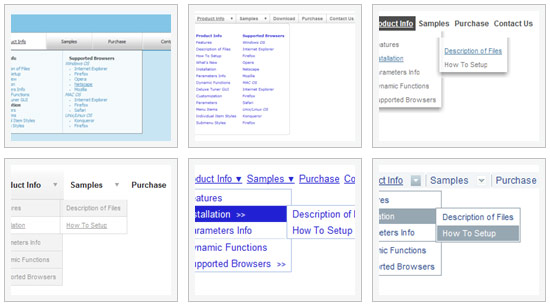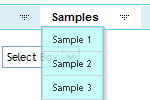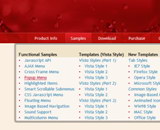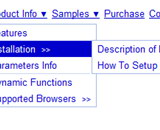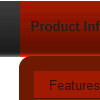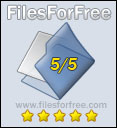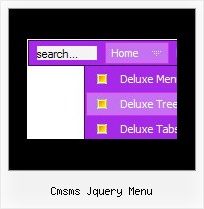Recent Questions
Q: Is there a way to have multiple drop down menus on the same web page? What I mean by that is I have a banner with drop downs (horizontal on page) that I want to use possibly with an include statement and when you click on one of the links from the drop down it would take you to a page that is say a department for example. But on this "department page" it would have another list of drop down menues in a different location in a vertical list. This gets tricky with a second set of script running to define the banner and a second set of drop down menues running vertical in a different location.
A: You can use as many different drop down menus on your site or your page as you want.
See more info about installation of several menus on the single pagehere:
http://deluxe-menu.com/installation-info.html
Q: Is it possible to make the menuitems rightclickable in the latest version of Deluxemenu. I want to rightclick on the drop down menu in javascript item and choose open in new window.
A: No, there is no such a feature in Deluxe Menu v3.2.7.
You can write your item in the following way:
["|<a href='http://www.domain.com'>test test test</a>",""],
But you should assign style for this link.
A.link {
...
}
A.link:hover {
...
}Q: In the javascript pulldown menu submenu width seems not to work in FF...
A: You should specify units in "px".
var itemStyles = [
["itemWidth=208px"],
];
var menuStyles = [
["smHeight=200px"],
];
Q: Is there a way to increase the margin between the text on the main tree menu and the edge of the dhtml menu control. The text appears to be right up against the left margin.
A: You can add symbol before item's text, for example:
[" Deluxe Tree: XP Style","", "", "", "", "XP Title Tip", "", "0", "0", "", ],
or you can write:
["+<div style='padding-left: 15px;'>Deluxe Tree: XP Style</div>","", "", "", "", "XP Title Tip", "", "0", "0", "", ],
Actually you can use any html code within dhtml menu control items.

